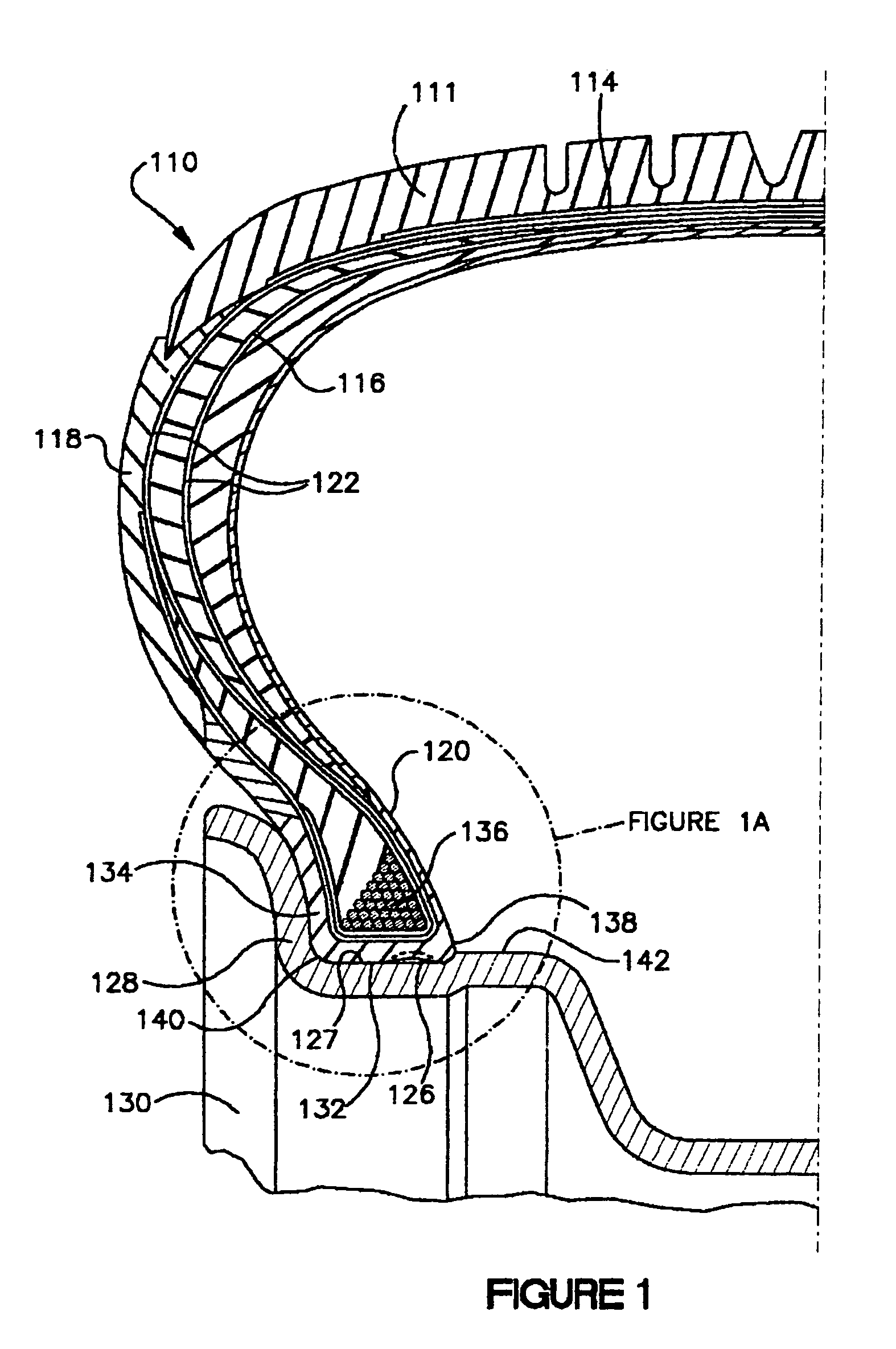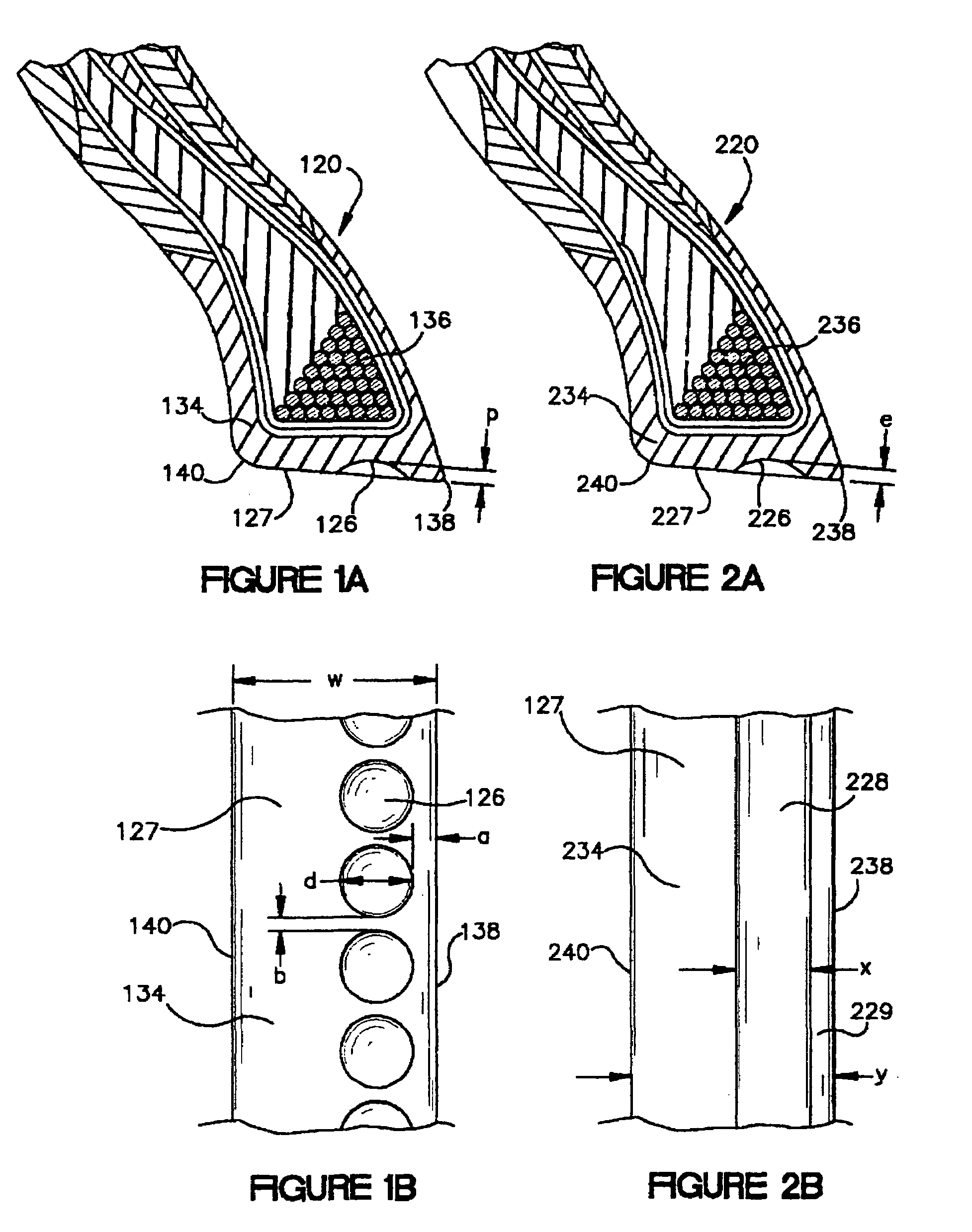Tire in with cavities in bead region
a technology of bead region and tire, which is applied in the field of pneumatic tires, can solve the problems of not being design is not compatible with conventional tires or conventional rims, and cannot meet the requirements of widespread acceptan
- Summary
- Abstract
- Description
- Claims
- Application Information
AI Technical Summary
Benefits of technology
Problems solved by technology
Method used
Image
Examples
first embodiment
Detailed Description of the First Embodiment
[0057]Referring to FIG. 1, there is illustrated a cross-sectional view of a runflat tire 110 incorporating a series of discrete cavities 126 on the surface of the bead region 120 of the tire in accordance with the first embodiment of the invention. The tire 110 has a tread 112, a belt structure 114, and a carcass structure 116, comprising a pair of sidewalls 118, a pair of bead regions 120, and one or more reinforcing carcass plies 122 anchored in each bead region 120. A series of cavities 126 are located in the surface 127 of the bead region 120 which contacts the wheel rim 128.
[0058]When the tire 110 is installed on a wheel 130, the cavities 126 are flattened against the rim bead seat 132 causing at least a 95 percent reduction in the volume of the cavities and causing the expulsion of about 90 percent of the air contained by the cavities. In addition, the initial size and shape of the cavities 126, the elasticity of the surrounding elas...
PUM
 Login to View More
Login to View More Abstract
Description
Claims
Application Information
 Login to View More
Login to View More - R&D
- Intellectual Property
- Life Sciences
- Materials
- Tech Scout
- Unparalleled Data Quality
- Higher Quality Content
- 60% Fewer Hallucinations
Browse by: Latest US Patents, China's latest patents, Technical Efficacy Thesaurus, Application Domain, Technology Topic, Popular Technical Reports.
© 2025 PatSnap. All rights reserved.Legal|Privacy policy|Modern Slavery Act Transparency Statement|Sitemap|About US| Contact US: help@patsnap.com



